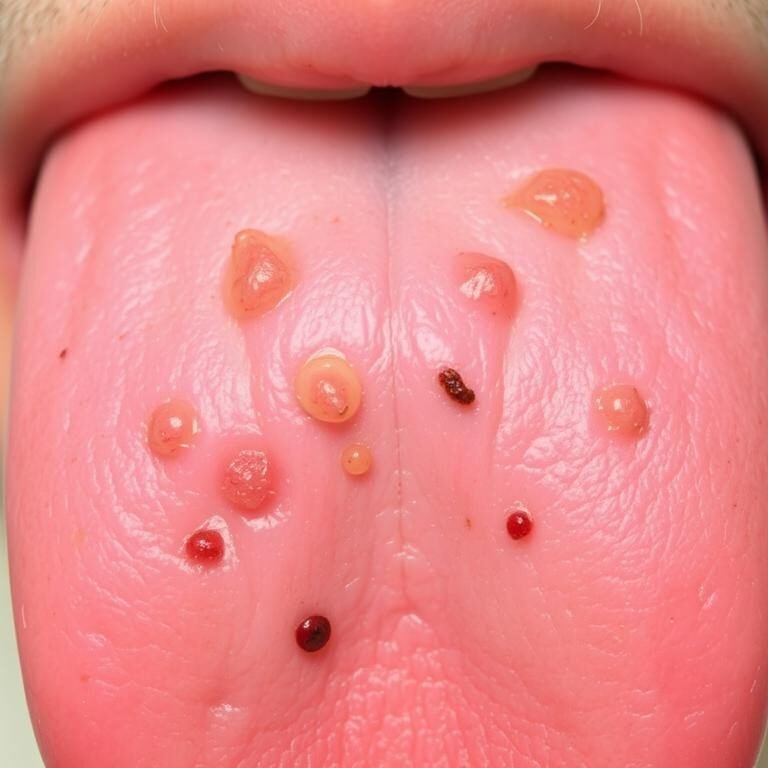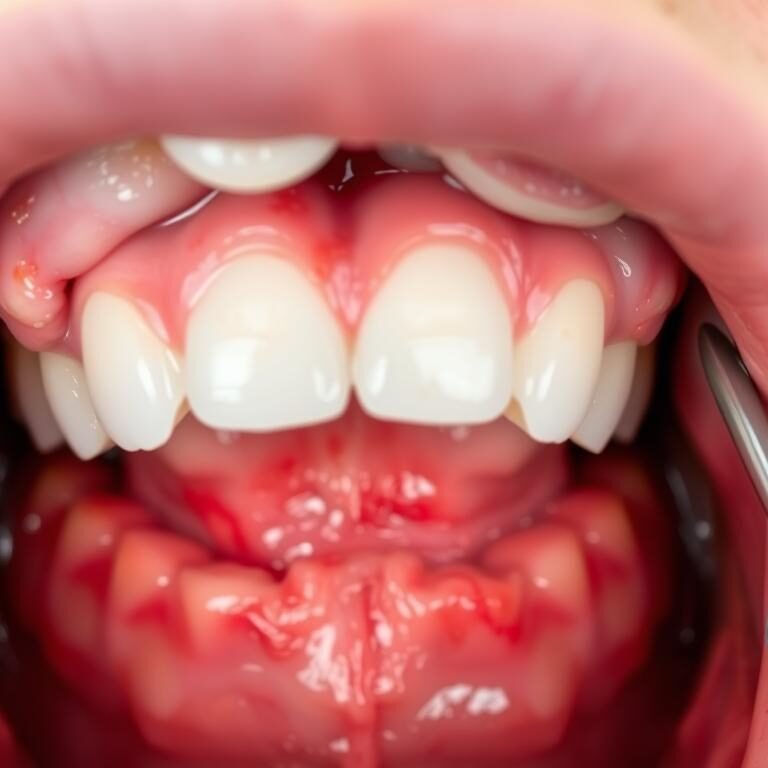Table of Contents
Benefits of Patient Education on Oral Health

Patient education on oral health plays a crucial role in promoting overall well-being and preventing dental problems. By equipping individuals with the knowledge and skills to maintain good oral hygiene practices, we empower them to take control of their dental health. Understanding the importance of regular brushing, flossing, and dental check-ups can significantly reduce the risk of common dental issues such as tooth decay and gum disease.
Moreover, patient education fosters a sense of accountability and responsibility towards one’s oral health. When individuals are informed about the impact of lifestyle choices, such as nutrition and substance use, on their teeth and gums, they are more likely to make healthier decisions. By emphasizing the connection between oral health and systemic health, patient education encourages a holistic approach to wellness, underscoring the significance of a healthy smile in promoting a healthy body.
Understanding the Importance of Oral Hygiene
Maintaining good oral hygiene is essential for overall health and well-being. Oral hygiene refers to the practices that help keep the mouth clean and free of disease. By brushing and flossing daily, individuals can prevent various dental issues such as cavities, gum disease, and bad breath. Poor oral hygiene can lead to serious health problems like heart disease, diabetes, and respiratory infections.
Regularly brushing and flossing remove plaque, a sticky film of bacteria that forms on teeth. When plaque builds up, it can harden into tartar, which can only be removed by a dental professional. Additionally, bacteria in the mouth can cause inflammation and infection in the gums, leading to gum disease. By practicing good oral hygiene habits, individuals can protect their teeth, gums, and overall health.
Common Dental Issues and How to Prevent Them
Tooth decay, also known as cavities or dental caries, is one of the most common dental issues affecting people of all ages worldwide. The primary cause of tooth decay is the build-up of plaque, a sticky film of bacteria that forms on teeth. When plaque interacts with sugars from food and drinks, it produces acid that erodes the tooth enamel, leading to cavities. To prevent tooth decay, it is crucial to maintain good oral hygiene practices, including brushing twice a day with fluoride toothpaste, flossing daily, and limiting sugary and acidic foods and beverages in the diet.
Gum disease, also called periodontal disease, is another prevalent dental issue that can range from mild gingivitis to severe periodontitis. Gum disease is caused by the inflammation of the gums due to the build-up of plaque and tartar along the gumline. Symptoms of gum disease include red, swollen, or bleeding gums, bad breath, and gum recession. To prevent gum disease, regular professional dental cleanings, proper oral hygiene, such as brushing and flossing, and a balanced diet rich in vitamins and minerals are essential. Early detection and treatment of gum disease are crucial to prevent further damage to the gums and surrounding structures.
| Dental Issue | Prevention Strategies |
|---|---|
| Tooth Decay (Cavities) | 1. Brush teeth at least twice a day with fluoride toothpaste. |
| 2. Floss daily to remove plaque between teeth. | |
| 3. Limit sugary and acidic foods and drinks. | |
| 4. Visit the dentist regularly for check-ups and cleanings. | |
| Gum Disease | 1. Brush teeth twice a day and floss daily. |
| 2. Use an antimicrobial mouthwash. | |
| 3. Eat a balanced diet rich in fruits and vegetables. | |
| 4. Avoid smoking and tobacco products. | |
| 5. Visit the dentist for regular cleanings and check-ups. | |
| Tooth Sensitivity | 1. Use a soft-bristled toothbrush. |
| 2. Avoid acidic foods and drinks. | |
| 3. Use toothpaste designed for sensitive teeth. | |
| 4. Wear a mouthguard if you grind your teeth at night. | |
| 5. See your dentist if sensitivity persists. | |
| Bad Breath | 1. Brush and floss teeth regularly to remove food particles. |
| 2. Clean your tongue with a tongue scraper. | |
| 3. Stay hydrated by drinking plenty of water. | |
| 4. Avoid foods that cause bad breath, like onions and garlic. | |
| 5. Quit smoking and avoid tobacco products. | |
| 6. Visit your dentist to rule out any underlying issues. |
The Role of Nutrition in Maintaining Oral Health
Nutrition plays a crucial role in maintaining optimal oral health. A balanced diet rich in essential nutrients like calcium, vitamin C, vitamin D, and phosphorus is vital for the health of our teeth and gums. Calcium, found in dairy products and leafy greens, strengthens tooth enamel, while vitamin C helps promote healthy gums and prevent gum disease. Vitamin D aids in the absorption of calcium, contributing to overall oral health. Including these nutrients in your daily diet can significantly enhance the health of your teeth and gums.
On the other hand, consuming sugary and acidic foods and beverages can increase the risk of tooth decay and enamel erosion. Sugary substances provide fuel for harmful bacteria in the mouth, leading to the formation of acids that attack the teeth. Acidic foods and drinks can also weaken tooth enamel, making teeth more susceptible to decay. Limiting the intake of sugary and acidic items, and opting for healthier snack options like fruits, vegetables, and dairy products, can help maintain a healthy oral environment and prevent dental issues in the long run.
Effective Techniques for Brushing and Flossing
Brushing and flossing are essential components of maintaining good oral health. When it comes to brushing, it is important to use a soft-bristled toothbrush and fluoride toothpaste. Brushing should be done in gentle, circular motions to effectively remove plaque and debris from all surfaces of the teeth. It is recommended to brush for at least two minutes, focusing on each quadrant of the mouth.

Flossing is equally crucial as it helps clean in between the teeth where a toothbrush cannot reach. Flossing should be done at least once a day using a gentle back-and-forth motion to remove food particles and plaque from between the teeth. Proper technique is key to prevent gum disease and tooth decay. Remember, a proper oral hygiene routine that includes both brushing and flossing is vital for achieving and maintaining optimal dental health.
The Connection Between Oral Health and Overall Well-being
Good oral health is not just about having a bright smile; it is intricately linked to your overall well-being. The mouth is a gateway to the body, and poor oral hygiene can have cascading effects on your health. Research has shown that gum disease is associated with various systemic diseases such as diabetes, heart disease, and even complications during pregnancy. The bacteria present in the mouth can enter the bloodstream, causing inflammation and potentially contributing to these health conditions.
Furthermore, the state of your oral health can also impact your mental well-being. Issues like tooth loss or oral pain can affect your quality of life and self-esteem. Poor oral health has been linked to anxiety, depression, and social isolation. Taking care of your teeth and gums is not just about aesthetics; it is a crucial aspect of maintaining overall health and emotional well-being.
How to Choose the Right Oral Care Products
When it comes to selecting the right oral care products, it is essential to consider your individual needs and oral health goals. With the vast array of options available in the market, it can be overwhelming to make the right choice. To ensure you are choosing the most suitable products for your oral care routine, it is advisable to consult your dentist. They can provide personalized recommendations based on your specific dental conditions, such as sensitivity, gum health, or enamel strength. Additionally, look for products that have the American Dental Association (ADA) seal of approval, as this indicates they have met the standards for safety and effectiveness.

Furthermore, when selecting oral care products, pay attention to the ingredients present in the formulations. Opt for toothpaste and mouthwash that contain fluoride, as it helps to strengthen enamel and prevent tooth decay. If you have sensitive teeth or gums, choose products that are specially formulated for these conditions, such as desensitizing toothpaste or alcohol-free mouthwash. For those looking to whiten their teeth, select whitening toothpaste that is gentle on enamel and avoids abrasive ingredients that can damage the teeth. By being mindful of your specific oral health needs and preferences, you can make informed choices when it comes to selecting the right oral care products for a healthy and radiant smile.
The Importance of Regular Dental Check-ups
Regular dental check-ups are a fundamental aspect of maintaining good oral health. These routine visits to your dentist play a crucial role in preventing major dental issues before they escalate. During these check-ups, your dentist can assess the health of your teeth and gums, identify any potential problems early on, and provide necessary treatments or interventions. Additionally, regular dental check-ups allow for professional cleaning to remove plaque and tartar buildup, which cannot be effectively tackled with regular brushing and flossing alone.
Furthermore, dental check-ups are also essential for early detection of conditions such as cavities, gum disease, oral cancer, and other oral health issues. By addressing these concerns promptly, the chances of successful treatment and prevention of further complications increase significantly. Your dentist will conduct a thorough examination of your oral cavity, including X-rays if necessary, to ensure a comprehensive assessment of your dental health. Remember, prevention is always better than cure, and regular dental check-ups are your first line of defense in preserving your oral health for the long term.
Recognizing Signs of Gum Disease and How to Address Them
Gum disease, also known as periodontal disease, is a common oral health issue that can lead to serious consequences if left untreated. One of the early signs of gum disease is gingivitis, characterized by red, swollen, and bleeding gums. If you notice these symptoms, it is crucial to take action promptly to prevent the progression of the disease. Ignoring gingivitis can result in the development of periodontitis, a more severe form of gum disease that can lead to bone and tooth loss.
Addressing gum disease requires a multi-faceted approach that typically involves professional dental care and consistent oral hygiene practices at home. Seeking professional treatment from a dentist or periodontist is essential to effectively manage gum disease. Treatment options may include deep cleaning procedures, antibiotic therapy, or in severe cases, surgery. In addition to professional care, maintaining a diligent oral hygiene routine that includes brushing at least twice a day, flossing daily, and using an antiseptic mouthwash can help manage and prevent gum disease. Remember, early detection and proactive management are key in preserving your oral health and overall well-being.
The Impact of Smoking and Alcohol on Oral Health
Smoking and alcohol consumption can have a detrimental impact on oral health, leading to a range of complications and issues. Tobacco use is associated with an increased risk of gum disease, tooth decay, and oral cancer. The chemicals present in cigarettes can weaken the immune system in the oral cavity, making it more susceptible to infections and diseases. Additionally, smoking can hinder the body’s ability to heal after dental procedures, prolonging recovery time and potentially leading to further complications.
Similarly, excessive alcohol consumption can also harm oral health. Alcohol dries out the mouth, reducing saliva production, which is essential for cleansing the mouth and neutralizing acids. This dryness can lead to an increased risk of tooth decay, gum disease, and other oral infections. Furthermore, alcohol abuse is linked to a higher likelihood of oral cancer, particularly in conjunction with smoking. It is important for individuals to be aware of the negative effects of smoking and alcohol on their oral health and to seek support and guidance in quitting these harmful habits.
Tips for Managing Dental Anxiety and Fear
For many individuals, visiting the dentist can evoke feelings of anxiety and fear. These emotions can stem from various sources, including past negative experiences, fear of pain, or general apprehension towards dental procedures. Fortunately, there are several strategies that can help manage dental anxiety and make the dental visit a more comfortable experience.
| Strategy | Description |
|---|---|
| Find a supportive dentist | Look for a dentist who specializes in treating anxious patients and has a calming demeanor. |
| Communicate your fears | Openly discuss your anxiety with your dentist, so they can tailor their approach accordingly. |
| Schedule short appointments | Start with shorter sessions and gradually increase the duration as you become more comfortable. |
| Bring a support person | Have a friend or family member accompany you to provide emotional support during appointments. |
| Use relaxation techniques | Practice deep breathing, meditation, or visualization exercises to calm your nerves beforehand. |
| Consider sedation options | Explore sedation dentistry options such as nitrous oxide or oral sedatives for a more relaxed experience. |
| Listen to music or podcasts | Bring headphones and listen to calming music or podcasts to distract yourself during the procedure. |
| Establish a signal system | Agree on a non-verbal signal with your dentist to let them know if you need a break or feel uncomfortable. |
| Choose morning appointments | Schedule appointments in the morning when you’re likely to be less fatigued and anxious. |
| Reward yourself afterward | Plan a reward for yourself after each dental appointment to create positive associations. |
| Gradual exposure | Gradually expose yourself to dental environments, starting with waiting areas before progressing to the treatment room. |
One effective tip for managing dental anxiety is to communicate openly with your dentist about your fears and concerns. By discussing your apprehensions with your dental provider, they can tailor the treatment to accommodate your needs and provide additional support during the visit. Additionally, practicing relaxation techniques such as deep breathing or visualization can help alleviate anxiety before and during the appointment. These methods can promote a sense of calmness and control, making the dental experience more manageable for individuals struggling with fear and anxiety.
Understanding the Different Types of Dental Treatments
Dental treatments encompass a wide array of procedures aimed at restoring and maintaining oral health. One common type of treatment is dental fillings, which are used to repair cavities caused by tooth decay. These fillings can be composed of amalgam, composite resin, gold, or porcelain, with each material offering its own set of benefits and considerations. Another essential dental treatment is root canal therapy, often necessary to save a tooth that has become infected or inflamed deep within its structure. During this procedure, the infected pulp is removed, and the inside of the tooth is cleaned and sealed to prevent further infection.
In addition to fillings and root canals, dental treatments also include procedures like dental crowns and bridges. Crowns are used to cover and protect damaged or weakened teeth, restoring their strength and appearance. Bridges, on the other hand, are used to replace missing teeth by bridging the gap between two existing teeth. These prosthetic devices not only improve the functionality of the mouth but also enhance the aesthetics of the smile. By understanding the various types of dental treatments available, patients can make informed decisions about their oral health care, ensuring they receive the most effective and appropriate treatments for their specific needs.
How to Maintain Good Oral Health at Home
Maintaining good oral health at home is crucial for preventing dental issues and ensuring a healthy smile. A consistent oral hygiene routine is the cornerstone of good dental care. Brushing your teeth at least twice a day with a fluoride toothpaste helps remove plaque and bacteria that can lead to cavities and gum disease. Additionally, don’t forget to floss daily to clean between teeth and along the gumline where your toothbrush may not reach.
Incorporating mouthwash into your routine can also help reduce bacteria in the mouth and freshen your breath. Choosing a mouthwash with fluoride can provide additional protection for your teeth. Furthermore, staying hydrated by drinking plenty of water throughout the day helps wash away food particles and bacteria, reducing the risk of decay. By being proactive with your oral care habits at home, you can maintain a healthy mouth and smile for years to come.
The Benefits of Seeking Second Opinions in Dentistry
Seeking a second opinion in dentistry can offer several benefits to patients seeking clarity on their oral health conditions or treatment options. It provides an opportunity for patients to gain a fresh perspective on their dental issues, ensuring a more comprehensive assessment and potential alternative treatment approaches. Consulting with multiple dental professionals can help patients make more informed decisions about their oral health, leading to better outcomes and increased satisfaction with their dental care.
Moreover, seeking a second opinion can enhance the patient’s confidence in their chosen treatment plan, as it validates the initial diagnosis and proposed treatment or may introduce new perspectives that align better with the patient’s preferences and expectations. By exploring different expert opinions, patients can feel more empowered in their decision-making process and have a clearer understanding of the available treatment options tailored to their specific oral health needs. Ultimately, seeking second opinions in dentistry can promote transparency, patient-centered care, and optimal oral health outcomes.
Utilizing Technology for Better Patient Education in Dentistry
In the realm of dentistry, the utilization of technology has brought about revolutionary advancements in patient education. Through interactive tools such as virtual reality simulations and 3D animations, dental practitioners are now able to provide patients with a more immersive and engaging learning experience. By visually demonstrating oral health procedures and conditions, patients can better understand the importance of proper dental care and hygiene practices.
Furthermore, technology has enabled dentists to personalize educational materials for individual patients, catering to their specific needs and preferences. From interactive apps that track brushing habits to personalized treatment plans delivered via email, technology has enhanced the way patients engage with their oral health. This tailored approach not only empowers patients to take ownership of their oral care but also fosters a stronger patient-dentist relationship built on trust and collaboration.
How can technology improve patient education in dentistry?
Technology can improve patient education in dentistry by providing interactive tools for explaining procedures, virtual simulations of treatments, and online platforms for accessing educational resources.
Is it important for patients to understand the connection between oral health and overall well-being?
Yes, it is crucial for patients to understand the connection between oral health and overall well-being as poor oral health can lead to systemic health issues such as heart disease, diabetes, and respiratory infections.
What role does nutrition play in maintaining oral health?
Nutrition plays a significant role in maintaining oral health as a balanced diet rich in vitamins and minerals helps strengthen teeth and gums, while avoiding sugary and acidic foods can prevent tooth decay and gum disease.
How can patients recognize signs of gum disease and what steps should be taken to address them?
Patients can recognize signs of gum disease such as red, swollen, or bleeding gums, and should promptly seek treatment from a dentist to prevent further progression of the disease through professional cleanings and personalized oral care plans.
Why is it important to seek second opinions in dentistry?
Seeking second opinions in dentistry can provide patients with different perspectives on their oral health issues and treatment options, helping them make informed decisions and ensuring the best possible care for their dental needs.











